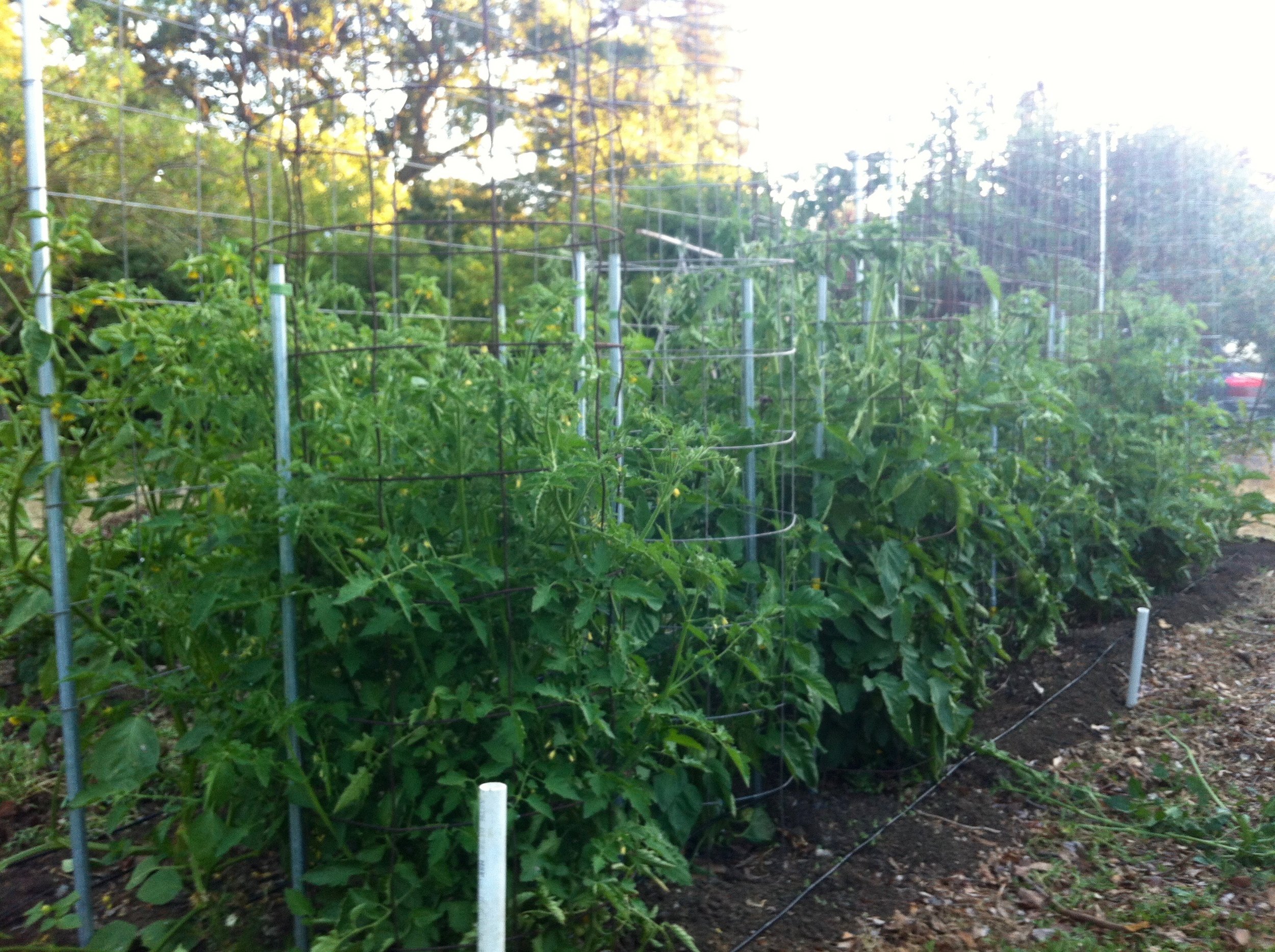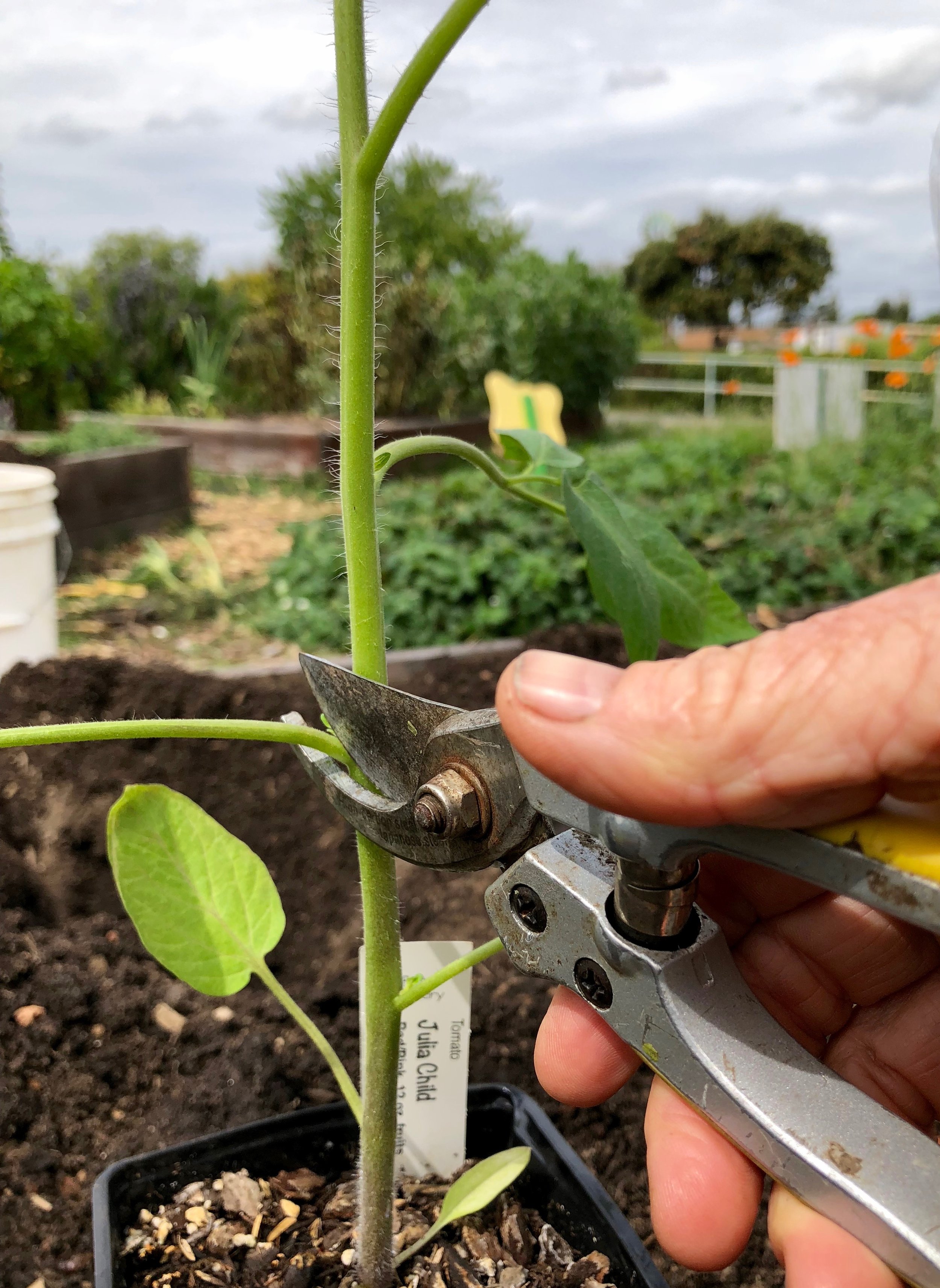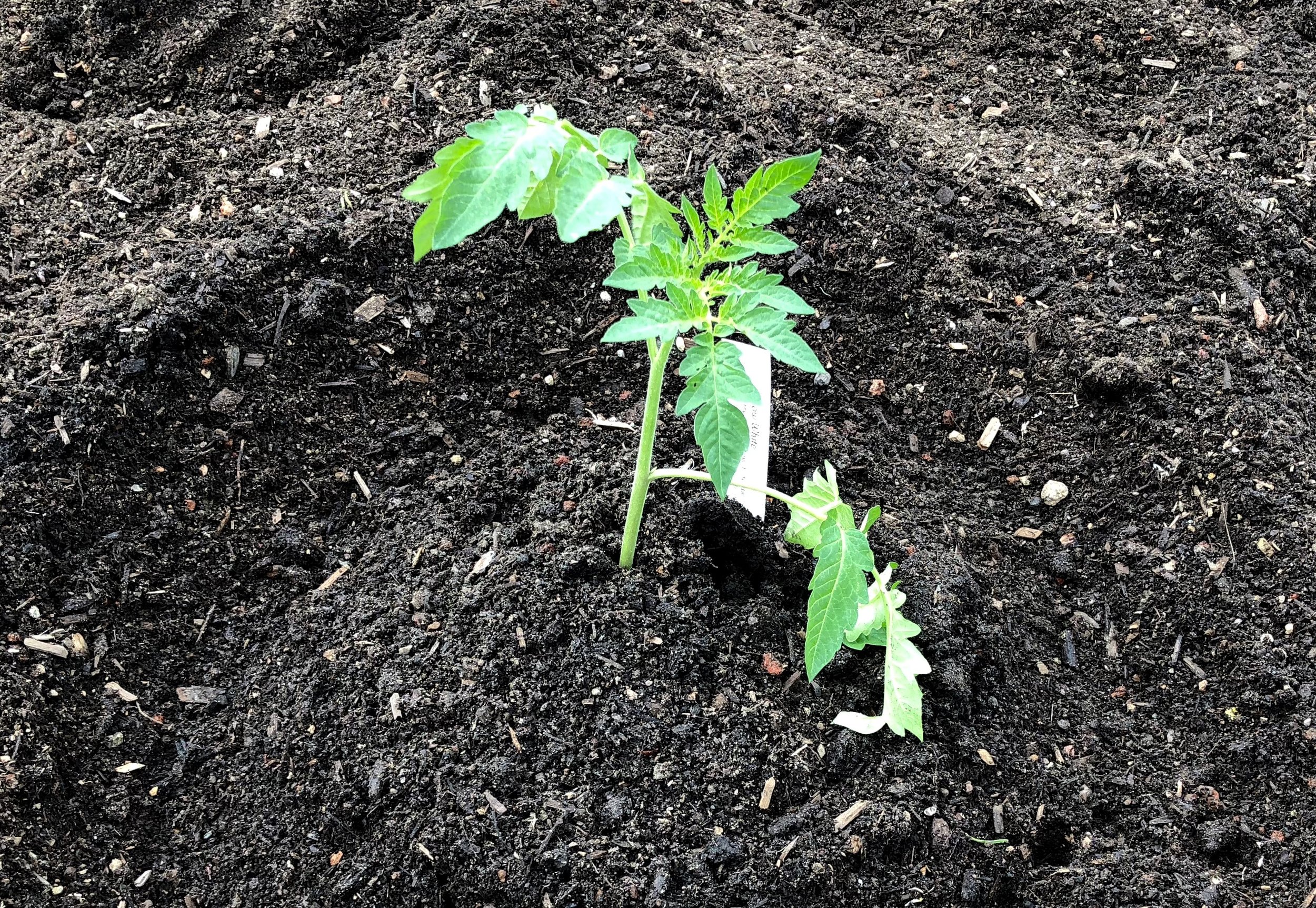Tomato Planting Guide
/How We Plant
Here's a guide to how we plant our tomato beds, step by step. The amendments noted (except the aspirin and eggshells of course) can be purchased at nurseries, hydroponic stores, and many hardware stores.
What You'll Need:
• Compost
• Fish Meal (not fish bone meal)
• Worm Castings
• Organic Fertilizer, such as Down to Earth All-Purpose
• Crushed Aspirin
• Crushed Eggshells
Steps:
1. Weed your bed. If you have a digging fork and moist (not wet) soil, it's easy to loosen the soil over the whole bed and pull the weeds out of the loosened soil. No need to turn the soil, just loosen it.
2. Spread a 2" layer of compost over your whole bed. As you dig planting holes the compost will begin to filter into the soil, allowing air into our compacted soils.
3. Dig your planting hole as deep as the height of the whole plant. Throw a handful of compost into the hole and loosen the edges and bottom of the hole. The compost will mix in a bit.
4. Add the goodies. Into the hole, put in a small handful each of fish meal, worm castings, and organic fertilizer. Add 2 each of crushed aspirin and eggshells. Mix it up, spreading the amendments around the hole. Add an inch or so of soil over the amendments.
5. Now it's time to plant. Clip the lower leaves off of the tomato plant (don't cut the stem), up to about mid-stem. You should now have a stem with leaves only in the top half of the plant. Remove the plant from the pot and gently pull apart the root ball--just enough to lose the shape of the pot. This encourages the roots to grow outward and down, instead of circling around. Place the plant into the hole so that all of the root ball and the naked part of the stem that had the leaves removed is below the soil line (the buried stem will produce roots for a healthy, more productive plant). Backfill the hole gently. DON'T tamp the soil down! You can pat the soil in place, but you don't want to compact it. Make a donut-shaped moat 12-14" in diameter around the plant, so that you have a trough to apply water to that will sink in around the plant without soaking the stem or running away from the plant.
6. Water. Fill the moat around your plant with water and let in sink in. Repeat 2 more times.
7. Mulch your bed. You'll water a LOT less and improve your soil condition. I like using 2"-4" of compost as mulch in my tomato beds.
Watering: Less is Best!
For the first few weeks, while your plant is getting established, water enough to keep the root ball moist, but not overly wet. Don't rely on sight. Soil, especially clay soil, can look bone dry on the surface yet be wet just a couple of inches down. Stick your fingers down into the soil and see how moist it feels at root depth.
After your plant is established, decrease your watering frequency so that roots will go deeper and wider for water. Think deep, less frequent waterings. You may only need to water once per week now, depending on your soil and weather. Too much water will stress your plants and make them more susceptible to disease.
For the best tasting tomatoes, reduce watering even further once fruit is set. Too much water makes tomatoes taste bland and watery, and can cause them to crack more easily. Again, think deep, infrequent water.
Feeding:
Every 4 weeks, move the mulch away from your plant and work a handful of fish meal and worm castings into the soil, and water it in well by hand. Be sure to move the mulch back in place. If you’d rather use a liquid feed, that’s fine, just feed a weak solution once per week.
Best wishes for a productive garden!







